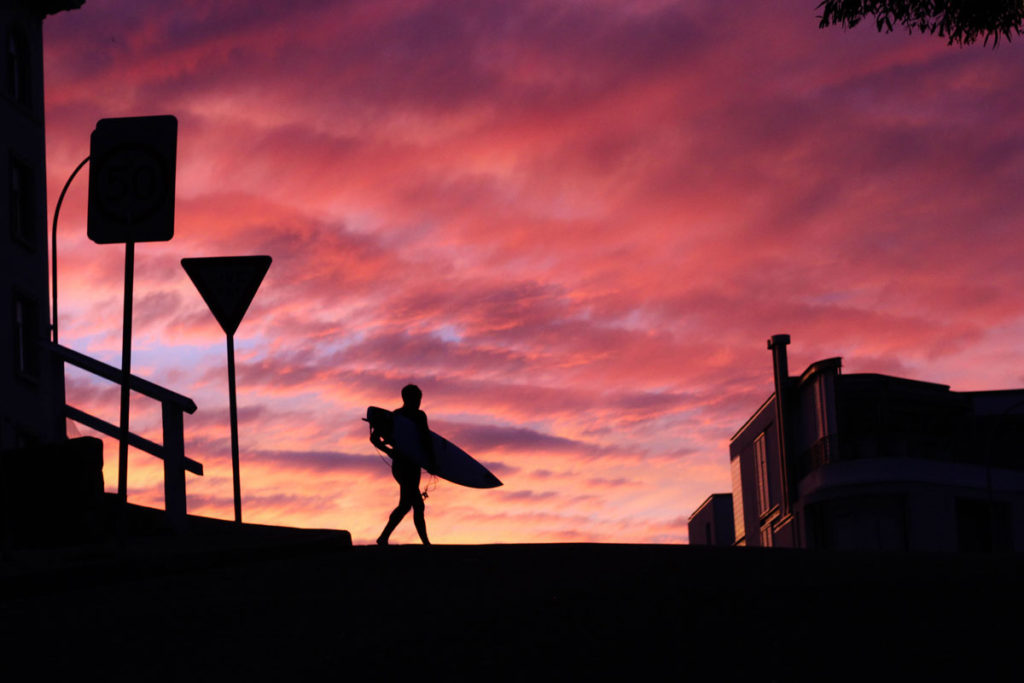One of the best ways to make a subject pop in a photo is not to focus on the subject at all, but the light behind them. So let’s learn something about silhouette photography!
Silhouettes provide a bit of mystery — you can usually tell what the subject is, but you don’t get to see the details. In a way, silhouette photography allows a photo to be different depending on the person who views it, because each person will fill in their own details and narratives.
So what’s the secret to taking great silhouette photos? While practice is a big part of getting it just right, we have some tips that you can start off with.
Silhouette Photography – Tip #1
Your Subject Choice is Important

This might seem a bit obvious, but the subject is incredibly important when it comes to taking a silhouette photo. Since the photo won’t rely on 3D shapes and colors, the subject you choose has to be easily recognizable without those details.
For example, you could take a silhouette photo of a ball, but why would you? There would be very little interest created by such a basic shape.
And in addition to choosing the right subject, it’s also usually important that you focus your photo on a subject or two instead of an entire scene. You typically don’t want a cluttered photo with silhouettes that detract from one another.
Silhouette Photography – Tip #2
Styling Matters

When it comes to photographing people as silhouettes, it’s incredibly important to think about their clothing and other styling. Silhouettes typically don’t work as well when a subject is wearing baggy clothing or their hair isn’t styled for the photo.
Have your subject dress in tighter clothing for the photo. It doesn’t have to be skin tight, but tight enough so that the silhouette of their body and features aren’t lost in a blob of fabric.
When it comes to styling hair, especially for subjects with long hair, it’s important to think about what angles you want to photograph them in. If you’re going for a profile shot, you want to make sure the hair stays out of the face by pulling it back a bit or even styling it in a ponytail or similar hairstyle.
If you want to photograph them head-on, leaving the hair down is fine; unless you want to ensure you bring attention to features like their ears or jewelry they are wearing on their head.
Silhouette Photography – Tip #3
Posing is Important

When capturing a silhouette, one of the most important aspects is the light coming from behind the subject. It can be light from many different sources — electric lighting, the sun, the moon, etc. What makes a silhouette successful is not the light source, it’s the contrast between that light and the subject of the photo.
That being said, there is much more interest that can be created when a photographer pays attention to how the subject and the light interact.
If a photographer were taking a picture of a couple, there would be much more drama in a photo of them standing apart and holding hands than if they were standing together. That’s because the space between them allows more interaction with the light in the background, whereas standing together would just create a solid dark mass with indistinguishable shapes.
Keep in mind how your subject is posing, especially if it’s a person and if you’re trying to convey a scene or an emotion.
Silhouette Photography – Tip #4
Mind Your Exposure

If you’re photographing a silhouette from your smartphone, you might be pretty limited when it comes to taking your exposure into account. The best you can do on a smartphone is focus on the background of the photo rather than the subject in the foreground, or make adjustments to contrast and brightness once the picture has been taken.
If you’re taking your photo on a digital camera, though, there is much more that you can do to ensure your subject stays in shadow while your background shines. Set your camera to expose for the background rather than the foreground.
You may need to play around with your settings a bit before you figure out what works best, because each location and type of lighting will require different levels of exposure. Even throughout your photography session you may need to readjust, especially if you are photographing as the sun sets and the lighting is constantly changing.
We also have some great tips for direct sunlight photography you might want to check out!


Comments are closed.